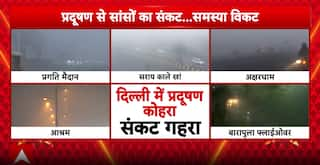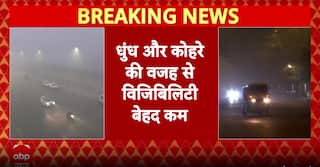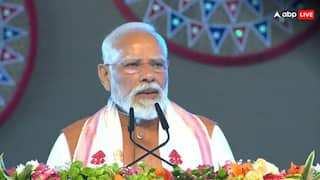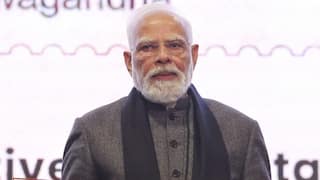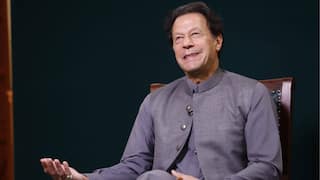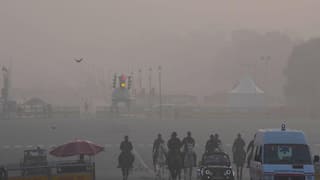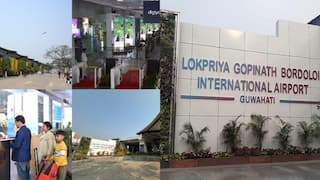Anti-Lockdown Protests in China: Reading The Discontent Against Slowdowns, Surveillance, Censorship

As resentment over Xi Jinping’s zero-Covid policy grows nearly three years into the pandemic, a wave of civil disobedience and public protests in mainland China is breaking out. Protests against China’s tight Covid restrictions have flared and extended to numerous cities, with hundreds of protesters entering into violent altercations with the police. This is President Xi Jinping’s toughest test after securing a historic third term in office as protestors are voicing discontent over pandemic management and continued cycles of lockdowns. Top health officials have admitted the impact of the policy despite defending it. They promised to “minimise discomfort” to the public by lifting lockdowns “as early as feasible” after outbreaks of protests. It might not be enough to placate the demonstrators, who took to the streets of numerous large cities and college campuses to call for an end to the nation’s expensive lockdowns. As the crowd grew, so did the variety of complaints; some even called for the ouster of Chinese leader Xi Jinping, who for almost three years has presided over a policy of mass testing, lockdowns, mandatory quarantines, and digital tracking.
The Trajectory Of Protests
Protests were catalysed due to the fatal fires in Urumqi, the capital of Xinjiang’s far western region. The public outrage was over the allegations that the lockdown procedures had prevented firefighters from reaching the victims. Residents of the city had been unable to leave the area for more than 100 days, and many had been forced to remain at home; in response to the fire tragedy, a march to the government building called for the lockdown to stop. The local authority announced the lockdown would gradually be lifted the following morning, but it did not provide a timeline or address the demonstrations. That failed to calm the public ire, and the protests quickly moved beyond Xinjiang, with people taking to the streets in cities and universities all over China. In response, many universities have sent students home to “defuse the situation” by clearing out campuses,
There have been 23 confirmed protests in 17 different Chinese cities, including Beijing, the country's capital, and Shanghai, the country's financial hub. On Urumqi Road in Shanghai, hundreds of people gathered to mourn the victims of the fire. Many people held up white sheets of paper with no writing to symbolise their opposition to censorship while chanting, “Need human rights, need freedom.” Others sang The Internationale, a communist anthem used as a rallying cry in protests worldwide for over a century and screamed for Xi to “step down”.Additionally, it was chanted in Tiananmen Square, Beijing, during pro-democracy demonstrations in 1989, just before a bloody crackdown by armed forces.
The protests should be read in the background of human rights violation reports from Xinjiang of the Chinese government’s alleged imprisonment of approximately 2 million Uyghurs and other ethnic minorities in facilities, torture, and the overwhelming mass surveillance system. In a report released by the UN in September, the surveillance network in the area was characterised as “intrusive”, with police databases housing millions of files comprising biometric information.
Similar large-scale protests have extended to Wuhan, Beijing, Chengdu, and Guangzhou, where tens of thousands of people demanded not only the lifting of Covid restrictions but, more significantly, political freedoms. Some residents of neighbourhoods that were under lockdown tore down fences and went outside. Protests also took place on campuses, including the prestigious institutions of Peking University and Tsinghua University in Beijing, and the Communication University of China, Nanjing. At least 1,000 protesters in two separate groups gathered in Beijing this week and refused to disperse. In Hong Kong, where a national security law imposed by Beijing in 2020 has been used to curb dissent, dozens of people gathered in the city’s Central district for a vigil. Some held blank pieces of paper; others left flowers and signs commemorating those killed in the Urumqi fire.
Reading the Political Discontent of Protests
Even though the context of these new protests is specific to the pandemic, the widespread nature and political slogans accompanying the protests hint at a larger discontent against the regime. Although protests in China are not uncommon, over the last decades, China’s middle class has rarely participated in political activism, so this show of dissent is significant. Over the years, the intensity of public protest has dwindled as the party has tightened control. Yet, according to the Chinese government data, widespread protests in China have been more regular and extensive since 1990. The annual count of domestic “mass incidents” or “public order disturbances”, which includes organised crime and street protests, increased from 5,000 to 10,000 in the early 1990s to 60,000 to 100,000 in the early 2000s. Despite the absence of official statistics after 2006, research by nongovernmental organisations and verbal declarations by Chinese officials place the number of annual protests in the tens of thousands.
Most of the protests that have taken place annually since Tiananmen Square have been localised and centred on material concerns. The issues ranged from unfair compensation for land purchases, low industrial wages, environmental damage, and lay-offs in state-owned enterprises to demands of legal recognition to the spiritual sect Falun Gong. However, these demonstrations did not criticise China’s top political figures or its political system; instead, they focused on concerns that directly touched these groups. In contrast, the protests by a group of intellectuals led by writer Liu Xiaobo who wrote “Charter 08” advocating for liberal democratic political reform, manifested political dissent against the system. Similarly, large-scale protests in Hong Kong during the past ten years also signify political discontent, even though the demands focused on political reform in Hong Kong and not all over China.
While the parallels drawn with protests culminating in the infamous Tiananmen Square incident may be too hasty, the sharp anti-system nature of the 2022 anti-lockdown protests and political demands cannot be ignored. There have been calls for Xi and CCP to step down, and discontent is writ large on the blank white papers in the hands of protesters. The counter-productive politics of Covid policies have brought to the fore more profound political discontent against economic slowdowns, surveillance, censorship and unfreedoms.
Government’s Reasons And Responses
Since the last three decades, the political norm of dealing with the protests includes non-acknowledgement by the central government, inefficient and repressive measures by the local government and censorship of news regarding protests. The response this time is not any different, even though the Chinese leadership is standing at a unique juncture with Xi’s unprecedented third term in office. Due to the Omicron wave of Covid-19 and the Russian invasion of Ukraine, Xi has faced numerous threats to an orderly transition to a third term. Xi’s agenda is to re-legitimize the communist party by bringing economic growth on track. Therefore, before the arrival of the Omicron wave, the zero-covid policy was initially viewed as China's victory against the US. Xi has continued the zero-Covid policy to maintain the appearance that China is “winning,” even though it is now dealing with unaffordable social and economic expenses due to the Omicron hit. Post-20th National Congress of the CPC, continuing zero-Covid policy of the government is pushing the limits in ways that could undermine economic recovery and social stability, ultimately proving dangerous to the regime and the party leadership. The number of cases has risen this week in numerous cities across China, and there are concerns as the Chinese stocks have dropped dramatically in the backdrop of protests. Amidst these uncertainties, a fresh reading of public sentiments and demands through these protests will be yet the most challenging job for the party. The impact of these protests on larger questions of legitimacy, stability and reforms concerns China and the world at large.
Rityusha Mani Tiwary teaches Political Science at Shaheed Bhagat Singh College, University of Delhi, and is an Honorary Fellow at the Institute of Chinese Studies, Delhi.
[Disclaimer: The opinions, beliefs, and views expressed by the various authors and forum participants on this website are personal and do not reflect the opinions, beliefs, and views of ABP News Network Pvt Ltd.]











